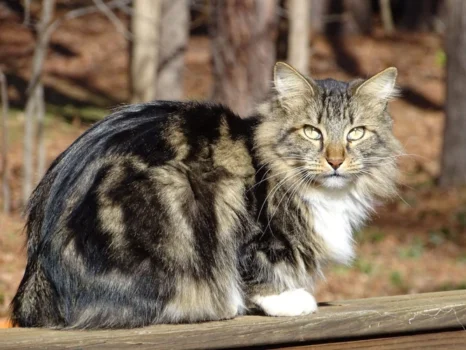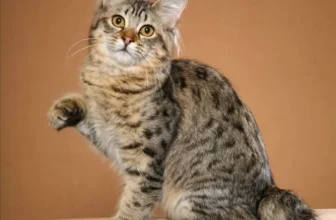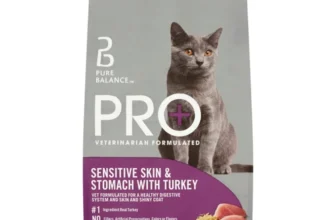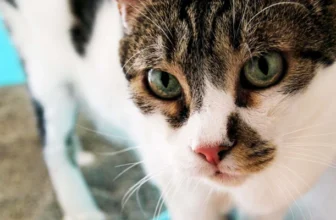As a responsible pet owner, choosing the right food for your American Bobtail can be an overwhelming task. You want to ensure that your feline friend is getting all the necessary nutrients to maintain a healthy and happy life. With so many options available, from wet to dry to semi-moist, and a variety of brands boasting different benefits, it can be difficult to know where to start. Understanding your American Bobtail’s nutritional needs, determining the right serving size, and selecting the right food can all make a major impact on their health and well-being. In this guide, we’ll explore the factors to consider when choosing the right food for your furry friend and debunk some common myths about cat food. So let’s get started!
Understanding Your American Bobtail’s Nutritional Needs
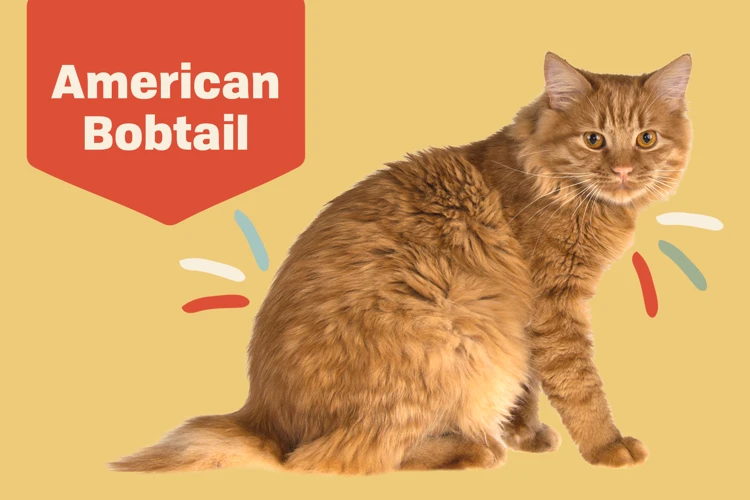
As a responsible pet owner, it’s important to provide your American Bobtail with a balanced and nutritious diet in order to ensure that they remain healthy and happy. Proper nutrition is essential for pets to maintain their overall well-being and to prevent a range of health problems. In this section, we will delve into the nutritional needs specific to American Bobtail cats, including the basics of feline nutrition, as well as special considerations that should be taken into account when selecting the right diet for your furry friend. It’s important to understand the unique nutritional requirements of your American Bobtail in order to provide them with the appropriate diet that will promote a healthy and active lifestyle. Let’s dive into the world of American Bobtail nutrition! If you’re interested in learning about common food-related issues in American Bobtail cats, or how to avoid foods that may trigger allergies in them, be sure to check out our articles on these topics.
The Basics of Feline Nutrition
Feline nutrition is a critical aspect of keeping your American Bobtail cat healthy and happy. An unhealthy diet can lead to various health issues, including obesity, diabetes, and urinary tract problems. In this article, we’ll help you understand the basics of feline nutrition so that you can choose the right food for your American Bobtail cat.
The Right Balance of Nutrients
Cats are obligate carnivores, which means that their bodies require a diet that consists mainly of animal-based protein. Unlike dogs, cats cannot synthesize certain amino acids, and they rely on their diet to provide these essential nutrients. A high-quality cat food should contain the right balance of protein, carbohydrates, and fats.
Here is a breakdown of the recommended nutrient levels for cats according to the National Research Council:
| Nutrient | Percentage |
|---|---|
| Protein | 26-40% |
| Fat | 30% |
| Carbohydrates | Up to 12% |
Water
Water is another essential nutrient for cats. Cats do not have a strong thirst drive, so it is essential to ensure that they get enough water through their diet. Wet cat food is an excellent source of hydration for cats because it contains up to 78% water. Additionally, you should always provide fresh, clean water for your American Bobtail cat to drink.
Vitamins and Minerals
Vitamins and minerals are necessary for cats to stay healthy. These nutrients play a crucial role in various bodily functions. Most commercial cat foods are formulated to contain the right balance of vitamins and minerals. However, if you are feeding your cat a homemade diet, it is essential to consult with a veterinarian to ensure that your cat is getting all the essential vitamins and minerals.
The Importance of Taurine
Taurine is an amino acid that is crucial for a cat’s health. It plays a crucial role in various bodily functions, including vision, digestion, and heart function. Unlike other animals, cats cannot produce taurine naturally, so it is essential to ensure that they get enough taurine in their diet. Most commercial cat foods are formulated to contain the right amount of taurine.
Conclusion
Understanding the basics of feline nutrition is essential for keeping your American Bobtail cat healthy. Ensure that your cat’s diet contains the right balance of protein, carbohydrates, fats, vitamins, and minerals. Additionally, provide plenty of fresh, clean water and ensure that your cat is getting enough taurine. In the next section, we’ll discuss the nutritional needs specific to American Bobtail cats.
Special Nutritional Needs of American Bobtail Cats
American Bobtail cats have specific nutritional needs that must be met to maintain their health and well-being. These cats require a diet that is high in protein, as well as certain vitamins and minerals. Here are some special nutritional needs of American Bobtail cats:
- Protein: American Bobtail cats require a diet that is high in protein, as this is the foundation for their muscles and overall body function. A diet that is rich in protein can help prevent muscle loss, as well as promote healthy skin and coat.
- Vitamins: Vitamin A, vitamin C, and vitamin E are important for maintaining the immune system of American Bobtail cats. These vitamins help fight off infections and illnesses, as well as keep skin and coat healthy.
- Minerals: Calcium, phosphorus, and magnesium are important minerals for American Bobtail cats. These minerals are crucial for maintaining healthy bones and teeth, as well as supporting the nervous system and heart function.
- Taurine: Taurine is an essential amino acid that is necessary for maintaining healthy eyesight and a strong heart in American Bobtail cats. This nutrient cannot be produced by cats, so it must be obtained through their diet.
- Fatty Acids: Both omega-3 and omega-6 fatty acids are important for American Bobtail cats, as they help protect the heart, reduce inflammation, and promote healthy skin and coat.
It is important to note that some American Bobtail cats may have food allergies or sensitivities, which can make it difficult to find the right food for them. If your cat has allergies, it is important to get them diagnosed by a veterinarian so that you can avoid any triggering foods. You can also check out our article on American Bobtail cat allergies for more information on this topic. For American Bobtail cats with sensitivities, it may be necessary to avoid certain ingredients, such as grains or certain types of protein. Our article on avoiding foods for sensitive American Bobtails can provide you with more detail on this topic.
Tips for Selecting the Right Cat Food
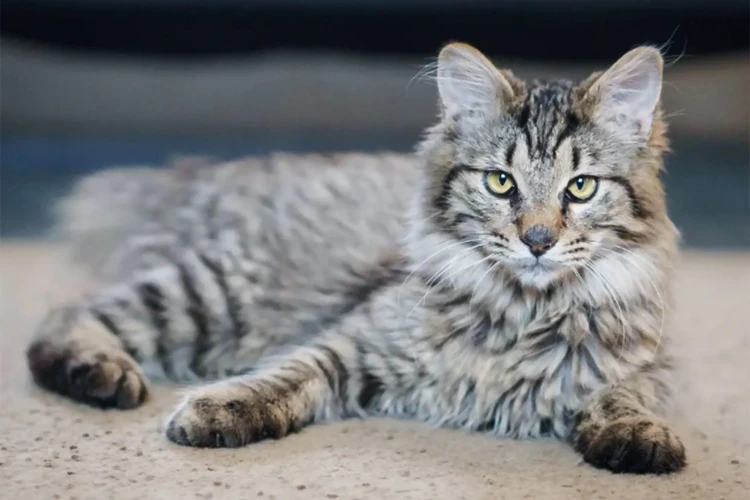
When it comes to selecting the best cat food for your American Bobtail, you need to be mindful of several factors including the ingredients, nutritional value, and your cat’s age, weight, and health. Choosing the right cat food may seem overwhelming at first. After all, the market is saturated with countless brands and types of cat foods that promise to fulfill your cat’s nutritional requirements. This section will provide you with some useful tips to help you make an informed decision while selecting the best cat food for your American Bobtail.
Reading the Labels
When it comes to selecting the right cat food for your American Bobtail, one of the most important steps is reading the labels. This is where you can find valuable information about the ingredients, nutritional values, and any potential allergens that may affect your cat’s health. Here are some key items to look for when reading cat food labels:
| Label Information | What to Look For |
|---|---|
| Guaranteed Analysis | This section provides information on the minimum percentage of protein, fat, and fiber in the food. Make sure the protein source is high-quality and relevant to your cat’s nutritional needs. |
| Ingredients List | Check to see if the first few ingredients include a good source of protein, such as chicken, turkey, or fish. Avoid foods with fillers such as corn, wheat, or soy. |
| AAFCO Statement | Look for a statement that indicates the food meets the nutritional requirements established by the Association of American Feed Control Officials (AAFCO). |
| Calorie Content | Pay attention to the number of calories per serving, especially if your cat is overweight or has a tendency to gain weight. |
| Food Additives and Preservatives | Avoid foods with artificial colors, flavors, or preservatives as they can be harmful to your cat’s health. |
| Allergens | Double-check for any potential allergens such as grains, dairy, or chicken, especially if your cat has a history of food sensitivities. |
Reading the labels on cat food can be overwhelming, but by following these tips, you can pick a food that meets your American Bobtail’s nutritional needs and promotes their overall health.
Checking Ingredients and Nutritional Values
Checking the ingredients and nutritional values of cat food is crucial when it comes to choosing the right type of food for your American Bobtail cat. It’s important to pay attention to both the quality and quantity of the ingredients used in your cat’s food to ensure they are getting a balanced and nutritious diet.
When checking the ingredients, make sure the first few ingredients listed are high-quality sources of protein, such as chicken or salmon, rather than fillers like corn or wheat. You should also look for essential vitamins and minerals to ensure your cat is getting a well-rounded diet. Common beneficial ingredients to look for in cat food include Vitamin C, Vitamin E, and Omega-3 fatty acids.
To make it easier to compare different cat food brands, it’s best to check the nutritional values listed on their packaging. This information should include the percentage of protein, fat, fiber, and moisture in the food. Be sure to pay attention to these values and choose a food that meets your cat’s specific nutritional needs.
To help you better understand the importance of checking ingredients and nutritional values, here is an example table comparing two different types of cat food:
| Brand A | Brand B |
|---|---|
| Protein: 35% | Protein: 25% |
| Fat: 12% | Fat: 15% |
| Fiber: 5% | Fiber: 3% |
| Moisture: 10% | Moisture: 8% |
| Protein Source: Chicken, Salmon | Protein Source: Beef, Pork |
| Additional Nutrients: Vitamin C, Omega-3 Fatty Acids | Additional Nutrients: Vitamin D, Zinc |
As you can see from the table, Brand A has a higher percentage of protein and a lower percentage of fat and moisture compared to Brand B. Brand A has high-quality sources of protein and beneficial nutrients like Vitamin C and Omega-3 Fatty Acids. By checking the ingredients and nutritional values, you can ensure that you are choosing a high-quality cat food that meets your American Bobtail cat’s nutritional needs.
Considering Your Cat’s Age, Weight, and Health
When selecting the right food for your American Bobtail, it is essential to consider your cat’s age, weight, and health. Here are some factors to keep in mind:
- Age: Kittens and senior cats have unique nutritional requirements. Kittens need more protein, fat, and calories to support their growth and development, while senior cats may benefit from a diet that is lower in calories and higher in fiber to maintain their weight and digestive health.
- Weight: Maintaining a healthy weight is crucial for your cat’s overall health and wellbeing. If your American Bobtail is overweight or obese, you may need to choose a weight management formula that is lower in calories and fat.
- Health: Cats with certain health conditions, such as diabetes or kidney disease, may require a special diet. If your American Bobtail has specific health needs, it is essential to choose a food that is tailored to their nutritional requirements.
By considering these factors, you can choose the right food that will meet the nutritional needs of your American Bobtail and help them live a healthy, happy life.
Factors to Consider When Choosing Cat Food
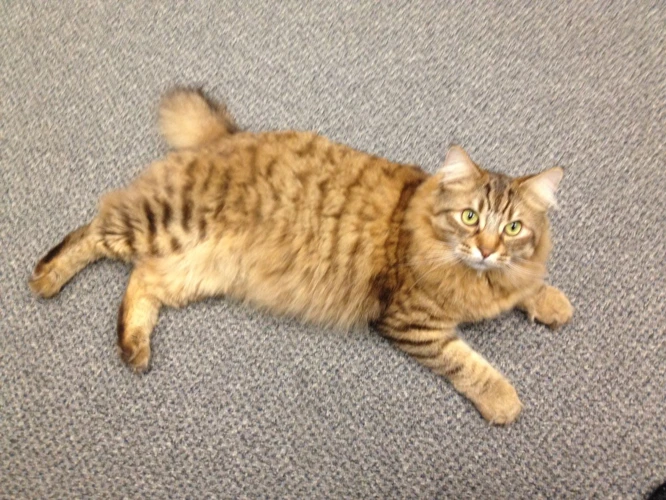
Choosing the right cat food can be a perplexing task for cat owners. With so many options available in the market, it can become overwhelming to select the best one for your American Bobtail cat. There are several factors to consider when choosing the right food, such as the type of food, the brand and quality, and any potential pet allergies and food sensitivities. In this section, we will discuss these factors in detail to help you make an informed decision and ensure your American Bobtail cat gets the right nutrition for their specific needs.
Cat Food Type: Wet, Dry or Semi-moist
When it comes to choosing cat food, one of the important factors to consider is the type of food. The three main types of cat food are wet, dry, and semi-moist. Each has its own advantages and disadvantages, and it’s important to understand them before making a choice. Here are some things to consider:
Wet cat food:
- Contains a high percentage of water, making it a good option for cats who don’t drink enough water.
- May help prevent urinary tract problems since it keeps cats well hydrated.
- Comes in canned or pouch form and is available in a variety of flavors.
- Is generally more expensive than dry food.
- Needs to be refrigerated after opening and may not stay fresh as long as dry food.
- Can be messier to serve and store than dry food.
Dry cat food:
- Is more convenient, as it can be left out for cats to eat throughout the day without spoiling.
- Is generally less expensive than wet food.
- Helps maintain dental health by reducing plaque and tartar buildup.
- Comes in a variety of flavors and types, including kibble and treats.
- May not provide enough hydration for cats who don’t drink enough water.
- Is not usually as appealing to picky eaters as wet food.
Semi-moist cat food:
- Has a texture and flavor that many cats find appealing.
- Has a higher water content than dry food but not as high as wet food.
- Is convenient to serve since it does not need to be refrigerated and can be left out for cats to eat throughout the day.
- Is generally more expensive than dry food but less expensive than wet food.
- May not provide enough hydration for cats who don’t drink enough water.
- Is not always readily available in stores.
When selecting the type of food for your American Bobtail, consider the cat’s individual needs and preferences, as well as your lifestyle and budget. It’s important to remember that while wet food may be the healthiest option for some cats, dry food may be better suited to the needs of others. Ultimately, the best choice is one that meets your cat’s nutritional needs and keeps them happy and healthy.
Brand and Quality of Cat Food
When it comes to selecting the right cat food, one of the most important factors to consider is the brand and quality of the food. Not all cat food brands are created equal, and some may not meet the nutritional requirements of your American Bobtail cat. Below are some key points to consider when evaluating the brand and quality of cat food.
Ingredients: Look for a cat food that has high-quality protein as the main ingredient, such as chicken or fish. Avoid foods that list “meat by-products” or “animal digest” as these can be low-quality sources of protein. It’s also important to look for a food that is free from artificial preservatives, flavors, and colors.
Nutritional Value: Check the nutritional value of the food by looking at the guaranteed analysis on the label. This will give you a breakdown of the percentages of protein, fat, fiber, and moisture in the food.
AAFCO Statements: Look for cat foods that are labeled as “complete and balanced” by the Association of American Feed Control Officials (AAFCO). This means that the food meets or exceeds the nutritional requirements recommended for cats.
Brand Reputation: Do some research on the brand of cat food you are considering. Look for reviews and recommendations from other cat owners, and check if the brand has been involved in any recalls or controversies.
Price: While price shouldn’t be the only factor to consider, it’s important to remember that higher-priced cat foods don’t always equate to better quality. Look for a food that fits within your budget while still meeting your cat’s nutritional needs.
To make it easier for you to compare different cat food brands, we made a table that showcases some of the popular cat food brands, their ingredients, and nutritional value:
| Brand | Main Ingredients | Protein % | Fat % | Fiber % | Moisture % |
|---|---|---|---|---|---|
| Purina ONE | Real Chicken, Rice, Corn Gluten Meal, Whole Grain Wheat | 34% | 13% | 4% | 12% |
| Hill’s Science Diet | Chicken, Whole Grain Wheat, Corn Gluten Meal, Chicken Fat | 30% | 17% | 3% | 10% |
| Blue Buffalo Wilderness | Deboned Chicken, Chicken Meal, Turkey Meal, Peas | 40% | 18% | 4% | 9% |
| Wellness CORE | Deboned Turkey, Turkey Meal, Chicken Meal, Peas | 45% | 17% | 3% | 10% |
Remember, it’s important to do your own research and consult your veterinarian before making any major changes to your American Bobtail cat’s diet. By carefully examining the brand and quality of the cat food you select, you can help ensure that your cat receives the necessary nutrients for a happy and healthy life.
Pet Allergies and Food Sensitivities
It’s important to remember that just like humans, cats can also have allergies and sensitivities to certain foods. If your American Bobtail exhibits any signs of a food allergy, such as vomiting, diarrhea, or itchiness, it’s important to switch to a different food as soon as possible. The following table can help you identify common food allergens in cats and the symptoms they might show:
| Common Food Allergens | Symptoms in Cats |
|---|---|
| Beef | Itching, gastrointestinal upset, ear inflammation, skin rash |
| Dairy | Diarrhea, vomiting, flatulence, bloating |
| Chicken | Vomiting, diarrhea, skin rash, itchiness, ear inflammation |
| Fish | Itching, swollen face or paws, vomiting, diarrhea |
| Corn | Itching, skin rash, gastrointestinal upset, ear inflammation |
If you suspect that your American Bobtail is sensitive to a particular food ingredient, you can look for hypoallergenic cat food options. These types of foods are designed to be gentle on your cat’s stomach and are formulated with novel protein sources that your cat may have never been exposed to before. It’s also a good idea to consult with your veterinarian to determine the best course of action for your cat’s specific needs. By paying attention to your cat’s body language and behavior, you’ll be able to help your furry friend live their healthiest and happiest life.
How to Determine Serving Sizes for Your Cat
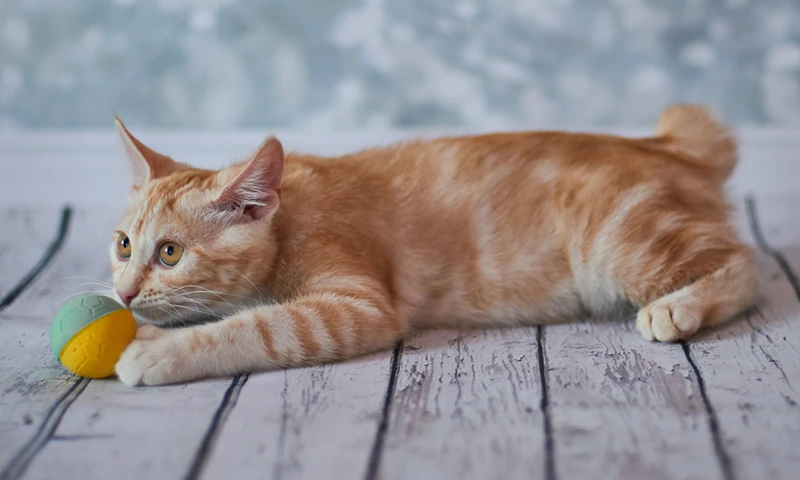
One of the most important aspects of feeding your American Bobtail cat is ensuring they receive the correct serving sizes. This will help maintain their overall health and prevent obesity or malnutrition. However, determining the ideal serving sizes for your cat can be confusing and challenging.
First and foremost, consult with your veterinarian. They can provide you with a recommended daily serving size based on your cat’s age, weight, and activity level. In general, adult American Bobtail cats require around 20-30 calories per pound of body weight per day. But, this can vary depending on each cat’s individual needs.
Take into account the type of food you are feeding your cat. Dry food has a higher calorie concentration, so portions may be smaller than wet food. Additionally, follow the feeding guidelines on the cat food packaging as a general rule of thumb.
Observe your cat’s behavior and body condition. If your cat seems lethargic or overweight, consider reducing their portions. If they are constantly begging for food or seem thin, you may need to increase their serving sizes. It’s important to regularly monitor your cat’s weight to ensure they are staying within a healthy range.
When introducing a new type of food, gradually adjust the serving sizes. Start with a smaller portion and monitor your cat’s reaction. Increase or decrease the serving size accordingly.
Remember to always provide fresh water alongside your cat’s meals. Keeping your cat hydrated will contribute to overall health and well-being.
Determining the correct serving sizes for your American Bobtail cat may require some trial and error. But, with the help of your veterinarian and by observing your cat’s behavior and body condition, you can ensure they receive the right amount of food for a happy and healthy life.
Transitioning to a New Cat Food
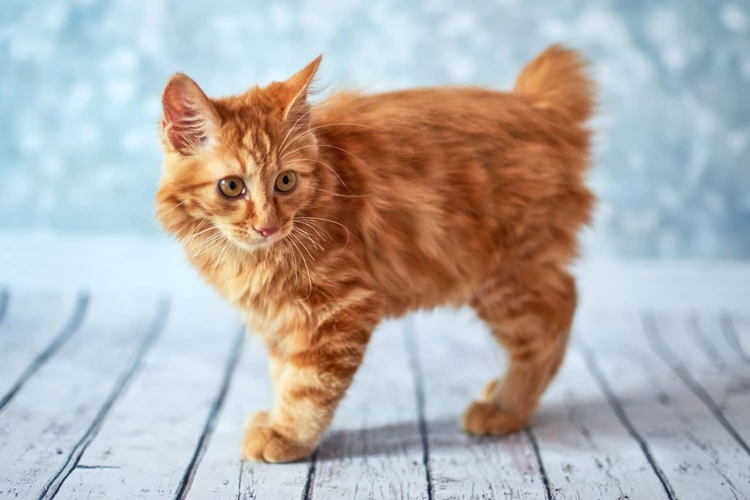
Gradual transition
Transitioning your American Bobtail cat to a new food should be done gradually over a period of 7 to 10 days. Abrupt changes in your cat’s diet can cause digestive upsets such as vomiting, diarrhea, or loss of appetite.
Step-by-step process
Begin by mixing a small amount of the new food with your cat’s current food. The ratio should be about 25% new food to 75% old food for the first two days. Then, gradually increase the amount of new food while decreasing the amount of old food over the next 5 to 7 days until your cat is fully on the new food.
Monitor your cat’s reaction
During this transition period, keep an eye on your cat’s behavior and appetite. If your cat experiences any digestive upset or refuses to eat the new food, slow down the transition process and take a step back to the previous ratio for a few more days before moving forward again.
It’s also important to make sure your cat drinks enough water during this time to avoid dehydration, particularly if they are experiencing diarrhea.
Benefits of gradual transition
By gradually transitioning your American Bobtail cat to a new food, you are allowing their digestive system to adjust to the new ingredients and nutrient levels. This can prevent digestive issues and ensure that your cat is getting the proper nutrition they need.
Switching to a new food
If you are switching to a new food due to health concerns, it’s important to consult your veterinarian first to ensure that the new food meets your cat’s specific health needs. Always choose high-quality cat food with the necessary nutrients for your cat’s age, weight, and activity level.
Feeding Your American Bobtail Cat
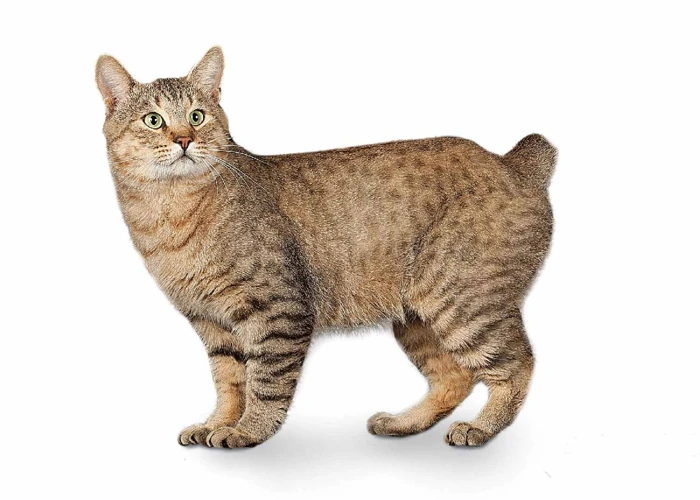
When it comes to feeding your American Bobtail cat, you want to ensure that they are getting the right nutrition that they need to maintain a healthy lifestyle. A balanced diet is crucial for your furball’s overall well-being, and knowing what and how much to feed them can be perplexing. In this section, we will explore various feeding tips and guidelines that will help you establish a proper feeding regimen for your American Bobtail, from kitten to adult.
Establishing a Feeding Schedule
One of the most important things to consider when it comes to your American Bobtail’s diet is establishing a feeding schedule. Unlike dogs, cats tend to prefer smaller, more frequent meals, so it’s best to split their daily recommended serving size into at least two meals, if not more.
Here are some tips for establishing a feeding schedule for your American Bobtail Cat:
- Stick to a routine: Cats are creatures of habit and thrive on routine. Feed them at the same time each day, and try not to deviate from that schedule too much, even on weekends or holidays.
- Monitor your cat’s appetite: Some cats are natural grazers and prefer to nibble on food throughout the day. Others prefer to eat their entire portion at once. Monitor your cat’s behavior and appetite to determine what works best for them.
- Adjust serving sizes as needed: Your cat’s serving size may need to be adjusted based on their age, weight, activity level, and overall health. Be sure to consult with your veterinarian to determine the appropriate serving size for your cat.
- Avoid overfeeding: Overfeeding your American Bobtail can lead to obesity and other health issues. Stick to the recommended serving sizes and avoid giving your cat too many treats or table scraps.
- Provide fresh water: In addition to their regular meals, provide your cat with access to fresh, clean water at all times. This helps keep them hydrated and can also aid in digestion.
By establishing a consistent feeding schedule for your American Bobtail, you can help maintain their overall health and well-being, and ensure that they are getting the nourishment they need to thrive.
Feeding Your American Bobtail Kitten
When it comes to feeding your American Bobtail kitten, it’s important to choose a high-quality, nutritionally balanced food that will support their growth and development. Here are some tips for feeding your American Bobtail kitten:
| Age | Feeding Schedule | Food Type |
|---|---|---|
| 4-6 weeks | 4-6 small meals per day | Wet or moistened dry kitten food |
| 6-12 weeks | 3-4 small meals per day | Dry or wet kitten food |
| 3-6 months | 2-3 meals per day | Dry or wet kitten food |
| 6-12 months | 2 meals per day | Dry or wet kitten food |
It’s important to feed your American Bobtail kitten a diet that is specifically formulated for kittens, as these foods are higher in protein and fat than adult cat food in order to support their growing bodies. You can choose between wet or dry kitten food, or a combination of both, depending on your kitten’s preferences and needs.
When feeding a young kitten, it’s important to feed them small, frequent meals throughout the day, as they have small stomachs and can’t eat a lot at once. As your kitten grows, you can start to reduce the number of meals per day and increase the amount of food per meal.
It’s also important to make sure your kitten has access to fresh, clean water at all times. You can provide water in a shallow dish or a water fountain specifically designed for cats.
In addition to their regular diet, you can also give your American Bobtail kitten treats in moderation. Look for treats that are specifically formulated for kittens and avoid giving them human foods, which can be harmful to their health.
By following these guidelines and feeding your American Bobtail kitten a high-quality, nutritionally balanced diet, you can help ensure that they grow up healthy and strong.
Feeding Your Adult American Bobtail Cat
As your American Bobtail cat reaches adulthood, it is important to establish a feeding routine that suits their needs. Adult cats require a balanced diet that provides them with the essential nutrients they need to maintain a healthy weight, strong bones, and immune system. Here are some guidelines to help you feed your adult American Bobtail cat.
| Feeding Frequency | Amount per Feeding | Total Amount per Day |
|---|---|---|
| Twice Daily | 1/4 to 1/3 cup of dry food or 3 oz of wet food per feeding | 1/2 to 2/3 cup of dry food or 6 oz of wet food per day |
Feeding Frequency: As with kittens, adult American Bobtail cats should be fed small, frequent meals throughout the day. Experts recommend feeding them twice a day, once in the morning and once in the evening.
Amount per Feeding: The amount of food your adult American Bobtail cat needs per feeding depends on their weight, age, and level of physical activity. As a guideline, 1/4 to 1/3 cup of dry food or 3 ounces of wet food is sufficient for each feeding.
Total Amount per Day: The exact amount of food your American Bobtail cat should consume each day depends on their weight and activity level. A healthy adult cat typically requires 1/2 to 2/3 cup of dry food or 6 ounces of wet food per day.
Remember that these are just guidelines, as each cat is unique, and may require a different amount of food based on several factors. It is recommended to consult with your veterinarian to determine the appropriate amount of daily food intake for your specific cat. Additionally, make sure your cat has access to plenty of fresh water throughout the day to ensure proper hydration.
It is important to stick to a consistent feeding schedule to prevent overeating and obesity, which can lead to other health complications. Avoid free-feeding as it encourages overeating and can lead to obesity. Monitor your cat’s weight and adjust the feeding amounts accordingly.
Choosing the right food for your American Bobtail cat can be challenging, but with the right information and guidance, it can be easier to make an informed decision. Remember that a balanced and healthy diet, combined with regular exercise and veterinary care, can help ensure your cat’s long-term health and happiness.
Signs of a Healthy Diet
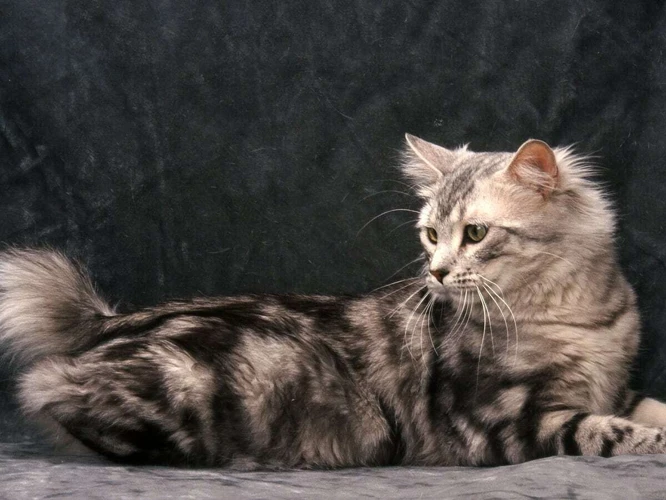
One of the clearest indicators of a healthy diet for your American Bobtail cat is a shiny and smooth coat. Using high-quality cat food that provides all the necessary nutrients can help ensure your cat’s coat stays healthy and looks great. Additionally, your cat should have good muscle tone and energy levels. If your American Bobtail is lethargic and does not seem to have the energy to play or explore, their diet may need to be adjusted.
Another sign of good nutrition is a healthy weight. Maintaining a stable weight is vital to your cat’s overall health and well-being. An overweight or obese cat can face a range of health problems, including diabetes, high blood pressure, and heart disease. Conversely, if your American Bobtail is underweight or appears to be losing weight rapidly, you should consult with your veterinarian to ensure there isn’t an underlying issue causing the weight loss.
Another aspect of a healthy diet is good digestion. Look for consistent bowel movements that are neither too hard nor too soft, and don’t have a strong odor. If you notice any changes in your cat’s bowel movements, speak to your veterinarian as soon as possible.
Finally, a healthy diet should contribute to good dental hygiene. Dry kibble is often better for promoting dental health than wet food as it requires chewing, which can help remove plaque from your American Bobtail’s teeth. Additionally, some cat foods are formulated specifically to aid in reducing dental problems, such as tartar buildup and gum disease.
Signs of a healthy diet in your American Bobtail cat include a shiny coat, optimal weight, good energy levels and muscle tone, healthy digestion, and good dental hygiene. By selecting a high-quality cat food that meets your feline’s nutritional needs and working with your veterinarian to adjust the diet as needed, you can help ensure your American Bobtail enjoys a long and healthy life.
Signs Your Cat’s Diet Needs to Be Adjusted
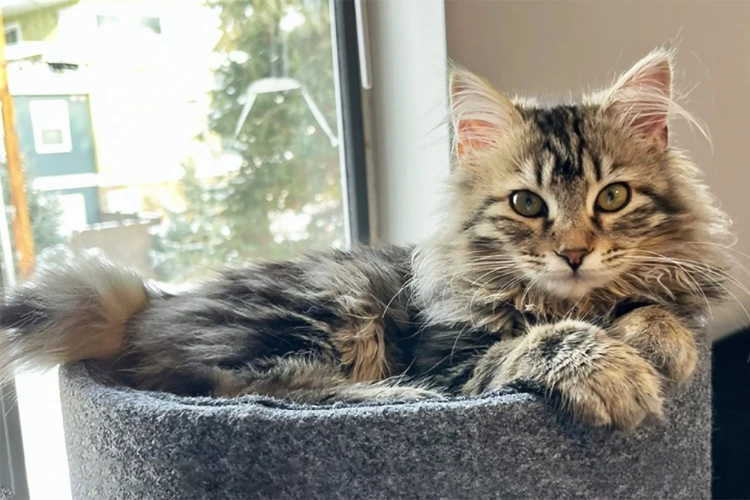
As a cat parent, it’s important to keep an eye out for any signs that your American Bobtail cat’s diet may need to be adjusted. One of the most obvious signs is weight gain or loss. Obesity is a common health problem in cats, and it can lead to serious health issues like joint problems, heart disease, and diabetes. On the other hand, sudden weight loss can be a sign of an underlying health issue or that your cat is not getting enough nutrients in its diet.
Another sign that your cat’s diet needs to be adjusted is digestive issues. This can include vomiting, diarrhea, or constipation. It’s important to monitor your cat’s bowel movements and seek veterinary advice if you notice any changes.
Poor skin and coat condition can also be an indicator that your cat’s diet needs to be changed. Cats require a diet rich in essential fatty acids to keep their skin and coat healthy. If your cat’s coat is dull or patchy, or if it has excessive dandruff or itchiness, it could be a sign that your cat is not receiving the proper nutrients in its diet.
Behavioral changes can also indicate that your cat’s diet needs to be adjusted. If your cat seems lethargic or less active than usual, it could be a sign of a nutrient deficiency. Conversely, if your cat is overly hyperactive or aggressive, it may not be getting enough food or the right type of food.
Lastly, dental issues can also be related to your cat’s diet. Poor dental health can make it difficult for your cat to eat, which can lead to weight loss or nutritional deficiencies. If your cat has bad breath, is drooling excessively, or has difficulty chewing its food, it’s time to schedule a visit with the vet.
It’s important to pay attention to your cat’s physical health and behavior to ensure it’s receiving the proper nutrition. If you notice any changes or concerns, speak with your veterinarian who can help you create a customized diet plan for your American Bobtail cat.
Diet-Related Health Issues in American Bobtail Cats
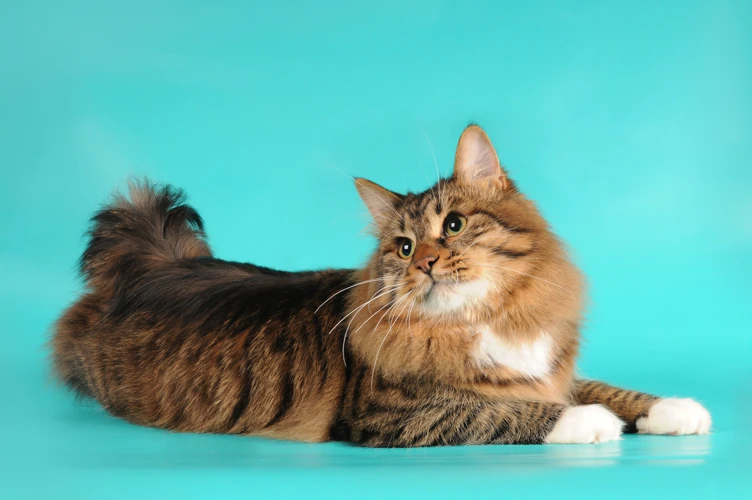
As much as we want to give our American Bobtail cats the best cat food that they deserve, we need to be aware of the potential diet-related health issues that they might encounter. These issues can range from obesity to urinary tract problems, and even diabetes. Understanding how our feline friends’ diet can affect their health is essential in keeping them healthy and happy. Let’s explore the different diet-related health issues that American Bobtail cat owners should know.
Obesity
Obesity is a growing concern among American Bobtail cat owners. Obesity is defined as an excessive accumulation of body fat that leads to health problems. It is mainly caused by overfeeding and lack of physical activity. Obesity can lead to serious health problems such as diabetes, joint problems, and heart disease. It is important to monitor your cat’s weight and adjust its diet accordingly.
Factors Contributing to Obesity in American Bobtail Cats
The following factors contribute to obesity in American Bobtail cats:
| Factor | Description |
|---|---|
| Overfeeding | Providing your cat with too much food, too many treats or too much table food. |
| Lack of exercise | Not providing enough opportunities for your cat to exercise. |
| Poor diet | Feeding your cat food that is high in fat and calories. |
| Aging | As your cat ages, its metabolism slows down, and it needs fewer calories. |
Preventing Obesity in American Bobtail Cats
Preventing obesity is easier than managing it. The following tips can help prevent obesity in American Bobtail cats:
- Provide your cat with a well-balanced diet that is low in fat and high in protein.
- Divide your cat’s daily food into several small meals throughout the day rather than one or two large meals.
- Avoid feeding your cat table food and limit the number of treats it receives.
- Encourage exercise by providing toys and opportunities for play.
- Regularly monitor your cat’s weight and adjust its diet as necessary.
Managing Obesity in American Bobtail Cats
Managing obesity in American Bobtail cats requires dedication and persistence. The following tips can help manage obesity in American Bobtail cats:
- Consult your veterinarian to create a weight-loss plan for your cat.
- Gradually decrease the amount of food you feed your cat over a period of several weeks.
- Provide your cat with low-calorie treats.
- Increase your cat’s activity level by providing toys and opportunities for play.
- Monitor your cat’s weight regularly and adjust its diet and exercise routine as necessary.
Obesity is a serious health concern among American Bobtail cats. Preventing obesity is easier than managing it, therefore it is important to monitor your cat’s weight and adjust its diet and exercise routine accordingly. Consult your veterinarian if you are concerned about your cat’s weight.
Urinary Tract Health
Maintaining good urinary tract health is crucial for all cats, including American Bobtails. Unfortunately, they are prone to developing urinary tract problems due to their genetics. As a responsible cat owner, it’s vital to understand the parameters regarding your cat’s urinary tract health to prevent them from developing serious health issues.
Urinary tract health problems in American Bobtail cats
Several health problems can affect the urinary tract of cats, including American Bobtails. One of the most common of these is Feline Lower Urinary Tract Disease (FLUTD), which can cause painful urination, blood in urine, and frequent urination. This condition can also cause bladder stones, a blocked urinary tract, or a urinary tract infection, which can develop into a life-threatening condition for a cat.
Factors that can affect urinary tract health
Various factors can impact the urinary tract health of cats. These include:
- Diet: Diet plays a vital role in maintaining your American Bobtail’s urinary tract health. Feeding your cat foods that are high in magnesium, phosphorus, and calcium can cause bladder stones and UTIs.
- Water: Proper hydration is essential for a healthy urinary tract in cats. Always make sure your feline friend has access to fresh, clean water.
- Weight: Obesity can be a contributing factor to urinary tract problems. An overweight cat is more likely to develop FLUTD, bladder infections, or bladder stones.
- Litter box: Keeping your American Bobtail’s litter box clean and providing them with at least one litter box per cat can help prevent UTIs.
Preventing Urinary Tract Problems in American Bobtail Cats
To prevent your American Bobtail from developing urinary tract problems, consider taking the following steps:
| Steps | Explanation |
|---|---|
| Choosing high-quality pet food | Make sure to choose pet food with a low magnesium content and high protein content. Wet food is also an excellent choice because of its high water content. |
| Hydration | Always ensure your American Bobtail has access to fresh, clean water. If your cat doesn’t like drinking water, try adding more water to their wet food or giving them wet food more frequently. |
| Weight management | If your American Bobtail is overweight, it’s vital to work with your veterinarian to create a healthy weight loss plan. |
| Exercise and environmental enrichment | Providing your American Bobtail with plenty of opportunities for exercise and mental stimulation can help reduce their stress levels, which in turn can reduce the risk of urinary tract problems. |
| Litter Boxes | Keep a clean litter box and provide your cat with easy access to one. Additionally, avoid overcrowding your cat’s litter box as this can create a breeding ground for bacteria. |
By prioritizing your American Bobtail’s urinary tract health, you can prevent severe health issues and ensure they are happy and healthy throughout their entire life.
Diabetes
Diabetes is a serious health issue that can affect American Bobtail cats. It’s important to choose the right food to help prevent diabetes in cats, as well as manage the condition if it does occur.
Symptoms of Diabetes in Cats
The symptoms of diabetes in cats include increased urination and thirst, weight loss, lethargy, and poor coat condition. If you notice any of these symptoms, it’s important to take your cat to the vet for a proper diagnosis.
Choosing the Right Cat Food for Diabetic Cats
When choosing food for diabetic cats, it’s important to select a high-protein, low-carbohydrate diet. Look for foods with a carbohydrate content below 10%.
Here’s a helpful table to guide you in selecting the right food for your diabetic American Bobtail:
| Food Type | Recommended | Not Recommended |
|---|---|---|
| Dry Food | Low-carbohydrate, high-protein options such as Royal Canin Glycobalance | High-carbohydrate, low-protein options |
| Wet Food | Low-carbohydrate, high-protein options such as Hill’s Prescription Diet m/d | High-carbohydrate, low-protein options |
| Semi-Moist Food | Low-carbohydrate, high-protein options such as Purina Pro Plan DM | High-carbohydrate, low-protein options |
Tips for Feeding Your Diabetic Cat
Feeding a diabetic cat requires a consistent routine. It’s important to feed your cat at the same time every day and stick to their recommended serving size. Make sure your cat has access to fresh water at all times and monitor their weight to ensure they are maintaining a healthy weight.
If you have any concerns about your cat’s diet or health, it’s always best to consult with your veterinarian.
Common Myths about Cat Food
There are many common myths about cat food that owners often fall prey to. It can be perplexing to figure out what information is correct and what is not. Some of these myths have been circulating for years, causing confusion among cat owners. Let us dispel some of these myths and provide you with accurate information about cat food that will help you make informed decisions when choosing the right food for your American Bobtail cat. So, let’s separate fact from fiction and get to the bottom of these myths!
Myth #1: Homemade Cat Food is Always Better
There is a common myth that homemade cat food is always better than commercial cat food. While there are certainly benefits to feeding your cat homemade cat food, it is not always the best choice. There are several factors to consider before deciding to switch from commercial to homemade cat food.
Benefits of Homemade Cat Food
One of the benefits of homemade cat food is that you have full control over the ingredients that your cat consumes. Commercial cat food often contains fillers, preservatives, and other additives that may not be ideal for your cat’s health. Homemade cat food can also be tailored to your cat’s specific nutritional needs, which is especially important if your cat has health issues or allergies.
However, making homemade cat food requires time and effort. You need to research and purchase the right ingredients and follow recipes carefully to ensure your cat is receiving the right balance of nutrients. Improperly prepared homemade cat food can be lacking in certain vitamins and minerals or unbalanced in its protein, fat, and carbohydrate ratios, which can lead to health problems.
Considerations Before Switching to Homemade Cat Food
Before deciding to switch to homemade cat food, there are several factors to consider:
| Consideration | Commercial Cat Food | Homemade Cat Food |
|---|---|---|
| Convenience | Easy to purchase and store | Time-consuming to make |
| Cost | Variety of price points available | May be more expensive to purchase ingredients |
| Nutritional Content | Commercial cat food is formulated to meet nutritional needs | Mistakes in homemade food can lead to nutritional imbalances |
| Allergies or Health Issues | May offer specialized formulas for certain health issues | Needs to be carefully formulated to ensure it meets specific dietary needs |
Conclusion
While homemade cat food does offer some benefits, it may not always be the best choice for every cat. Careful consideration must be given to your cat’s nutritional needs, budget, and your own ability to consistently prepare balanced and nutritious meals. Commercial cat food can provide a convenient and affordable option that still meets your cat’s nutritional needs. It is best to consult with your veterinarian before making any significant changes to your cat’s diet.
Myth #2: Dry Cat Food is bad for Cats
It is a common misconception that dry cat food is bad for cats. However, this is not entirely true. While some cats may benefit from a wet food diet due to specific health issues, dry cat food can provide a well-balanced diet for a healthy cat. Here are some facts to dispel the myth that dry cat food is bad for cats:
- Dry cat food helps maintain dental health: The crunchy kibbles can scrape away tartar and plaque buildup on the teeth. This helps to prevent dental problems and can reduce the risk of gum disease in cats.
- Dry cat food can be more convenient: Unlike wet food, dry cat food does not require refrigeration and can be left out for your cat to nibble on throughout the day. This is especially helpful for busy pet owners who may not have time to feed their cat on a strict schedule.
- Dry cat food can be less expensive: On average, dry cat food is less expensive than wet cat food. This makes it an affordable option for pet owners who need to stick to a budget while still providing their cat with a nutritionally balanced diet.
- Dry cat food can also provide essential nutrients: Many brands of dry cat food contain essential vitamins and minerals that cats need to maintain good health. In fact, some dry cat food brands are specifically formulated to meet the nutritional needs of cats of all ages, breeds, and health status.
While it is true that some cats may prefer wet food, and others may need it if they have certain medical conditions, it is not accurate to say that dry cat food is bad for cats. As with any food, it is important to choose a high-quality dry cat food that is nutritionally balanced and meets your individual cat’s needs. Consult with your veterinarian to determine the best food for your cat’s unique needs and enjoy the convenience and benefits of dry cat food.
Myth #3: Wet Cat Food is Always Better than Dry Food
There is a common myth surrounding cat food that wet cat food is always better than dry food. However, this is not completely true. Both types of food have their own advantages and disadvantages, and it ultimately depends on the individual cat’s needs and preferences.
The advantages of dry cat food:
| Advantages |
|---|
| Dry cat food is more convenient to store and feed |
| It has a longer shelf life than wet cat food |
| Dry cat food is beneficial for dental health as it can help to scrape away plaque and tartar buildup on the teeth |
The advantages of wet cat food:
| Advantages |
|---|
| Wet cat food has a high moisture content which is beneficial for cats who don’t drink enough water on their own |
| It can be more palatable for picky eaters and cats with dental issues |
| Wet cat food can be beneficial for cats who struggle with urinary tract issues |
It’s important to note that both types of food can have a place in a cat’s diet. If your cat is healthy and has no specific dietary needs or preferences, it’s perfectly fine to incorporate both wet and dry food. However, it’s always best to consult with your veterinarian to determine the best diet for your individual cat.
Myth #4: Grain-Free Cat Food is Healthier
One common misconception among cat owners is that grain-free cat food is always healthier. While it’s true that some cats may have grain allergies or intolerances, which may require a grain-free diet, most cats actually do not have any issues digesting grains. In fact, many grains, such as rice and barley, can provide essential nutrients like protein and fiber.
Grain-free diets can also be more expensive than regular cat food because they tend to use alternative sources of carbohydrates and fillers, like potatoes and peas. Unfortunately, some of these alternative ingredients may actually be more difficult for cats to digest than grains.
In recent years, there have been some studies linking grain-free diets to heart disease in cats. This is because many grain-free cat foods substitute grains with potatoes and legumes, which are high in a substance called lectins. Lectins can interfere with the absorption of taurine, which is an essential amino acid that cats need for heart health. As a result, some cats may develop taurine-deficient dilated cardiomyopathy (DCM) on a grain-free diet.
To ensure that your American Bobtail cat is getting the proper nutrition, it’s best to consult with your veterinarian about any dietary concerns. In general, there is no one-size-fits-all approach to cat nutrition, and what works for one cat may not work for another. By carefully reading labels and ingredients, and monitoring your cat’s health and behavior, you can help ensure that your cat is getting the nutrition that it needs to stay healthy and happy.
Conclusion
After reading this comprehensive guide, you should now have a good understanding of how to choose the right food for your American Bobtail cat. Remember, the nutritional needs of cats vary depending on their age, weight, and overall health, so it’s crucial to consider these factors when selecting their diet.
When it comes to choosing the right food, always read the labels and check the ingredients and nutritional values. Opt for high-quality brands that are free from grains and artificial preservatives. If your cat has any food allergies or sensitivities, be sure to choose a food that is suitable for their needs.
When feeding your American Bobtail, establish a feeding schedule and portion their food according to their weight and age. Always monitor their weight and adjust their portions accordingly to prevent obesity and other diet-related health issues.
Keep an eye out for signs that your cat’s diet needs to be adjusted, such as changes in their behavior, bathroom habits, or overall health. And don’t forget to consult with your veterinarian if you have any concerns about your cat’s diet or health.
In conclusion, providing your American Bobtail with a healthy and balanced diet is one of the most important things you can do to ensure their overall health and well-being. By following the tips and guidelines outlined in this article, you can make informed decisions about your cat’s diet and enjoy a happy and healthy life together.
Frequently Asked Questions
What is the best type of cat food for American Bobtail cats?
The best type of cat food for American Bobtail cats is a high-quality, nutritionally balanced, and complete cat food that meets their specific needs. Consider your cat’s age, health, and weight, and choose the type of cat food that suits their needs best.
Can I feed my American Bobtail homemade cat food?
While homemade cat food is an option, it can be challenging to ensure that your cat gets all of the nutrients they need. It is best to consult with a veterinarian or veterinary nutritionist to ensure that the homemade diet meets your American Bobtail’s nutritional needs.
How often should I feed my American Bobtail cat?
You should establish a regular feeding schedule for your American Bobtail cat. Depending on their age and physical activity, they may need several small meals throughout the day or one or two larger meals.
Should I choose wet or dry cat food for my American Bobtail?
The choice between wet and dry cat food depends on your cat’s individual needs and preferences. Wet food provides more moisture, while dry food can help keep teeth clean. Consider consulting with a veterinarian to determine the best type of food for your American Bobtail.
Can my American Bobtail cat eat a vegetarian diet?
No, American Bobtail cats are obligate carnivores, meaning they require nutrients found only in animal tissue to survive. A vegetarian diet cannot provide the necessary nutrients to meet their needs.
How can I tell if my American Bobtail cat is overweight?
You can tell if your American Bobtail cat is overweight by feeling for their ribs and spine. If you cannot easily feel them and your cat has no waist, they may be overweight. Consult with a veterinarian to develop a weight loss plan if necessary.
What are some common food allergens for cats?
Common food allergens for cats include chicken, beef, dairy, and fish. If you suspect your American Bobtail has a food allergy, switch to a food with a different protein source and consult with a veterinarian if necessary.
What is the recommended protein percentage in cat food?
The recommended protein percentage in cat food is between 25-40%. However, individual cat’s needs may vary based on age, weight and physical activity level. Consult with a veterinarian to determine the appropriate amount of protein for your American Bobtail cat.
What are the benefits of grain-free cat food?
The benefits of grain-free cat food are still a topic of debate within the veterinary community. While it may be beneficial for some cats with food allergies, there is no conclusive evidence that grain-free cat food is healthier for all cats.
Can my American Bobtail cat eat a vegan diet?
No, American Bobtail cats cannot eat a vegan diet as they require nutrients found only in animal tissue to survive. A vegan diet cannot provide the necessary nutrients to meet their needs.

